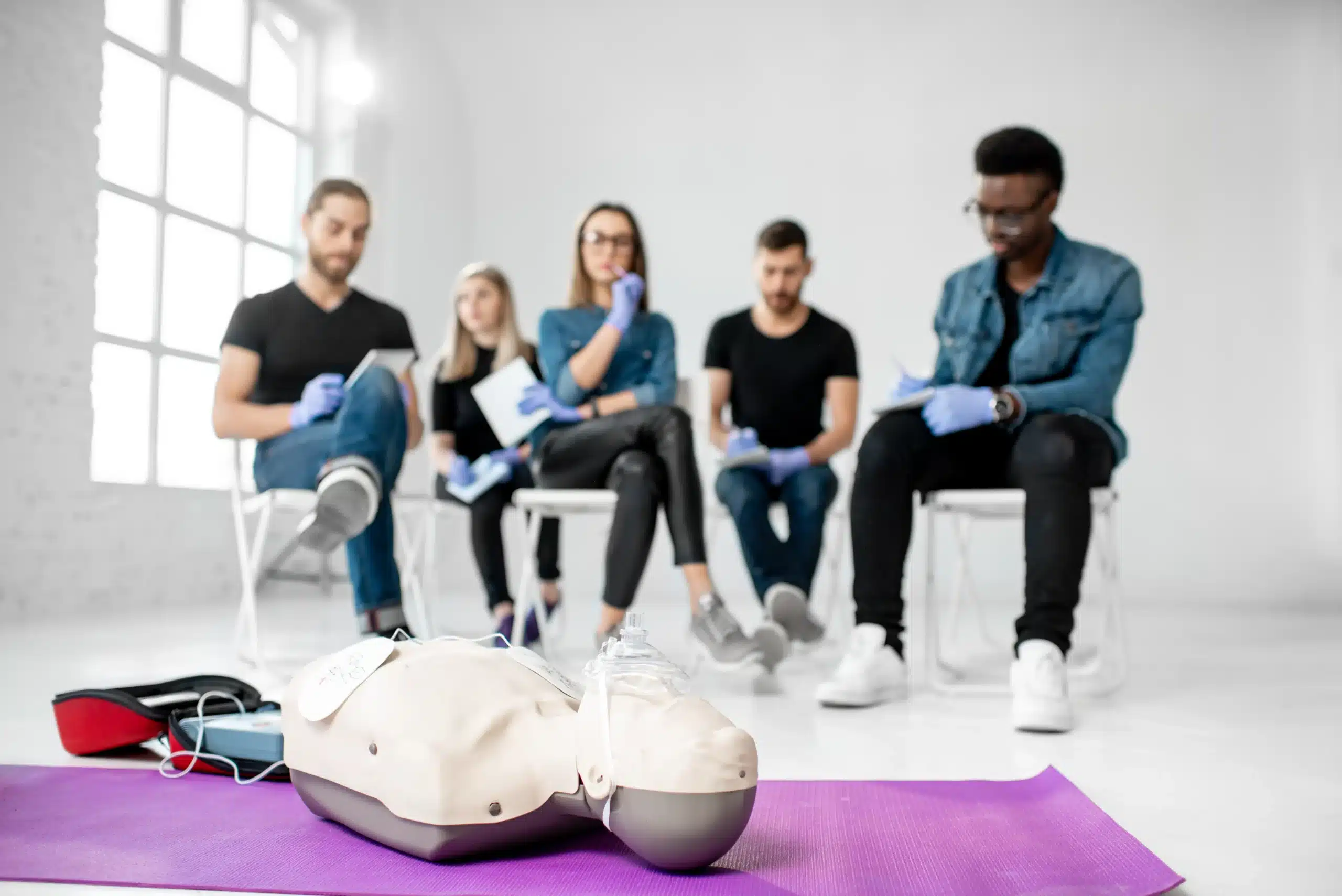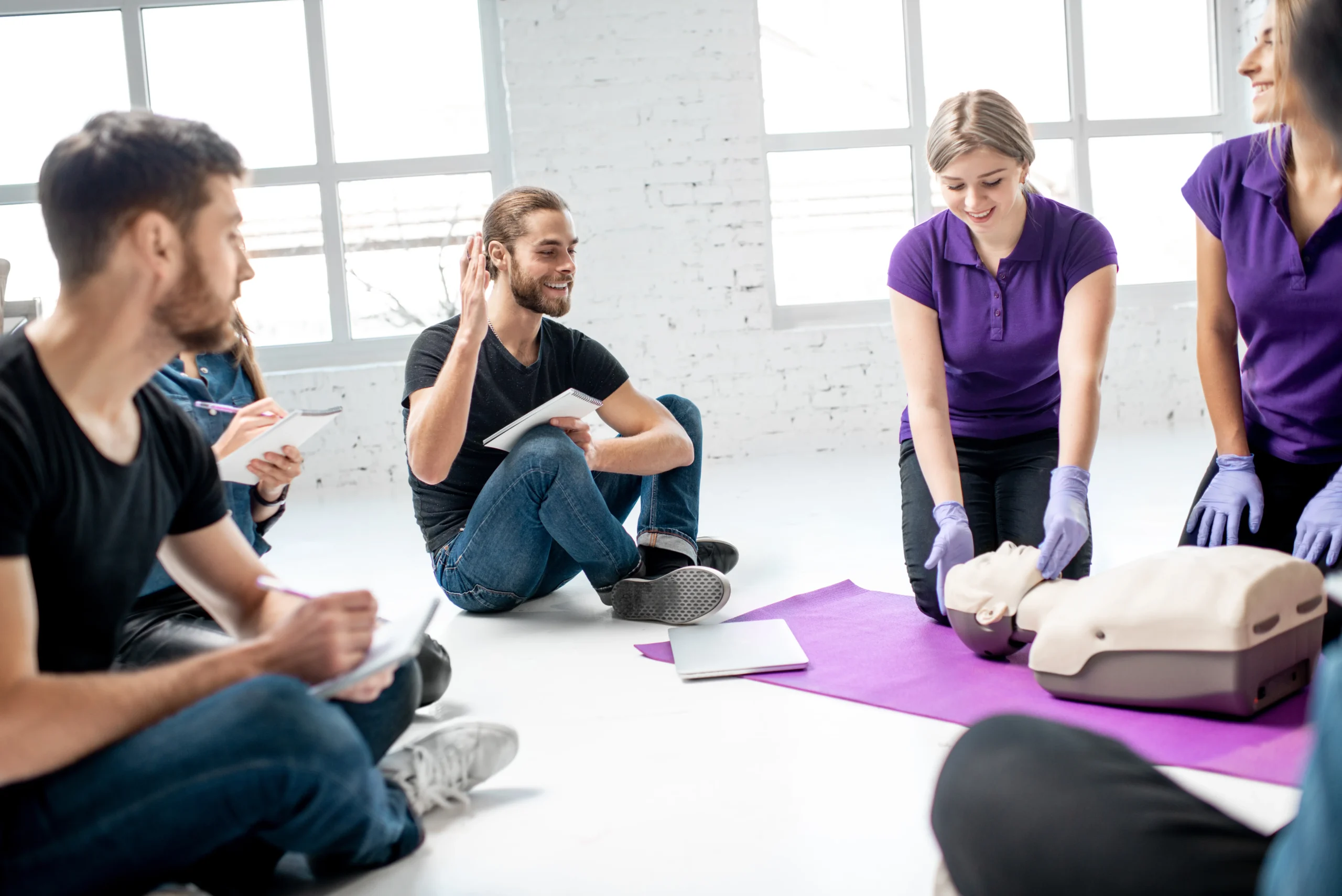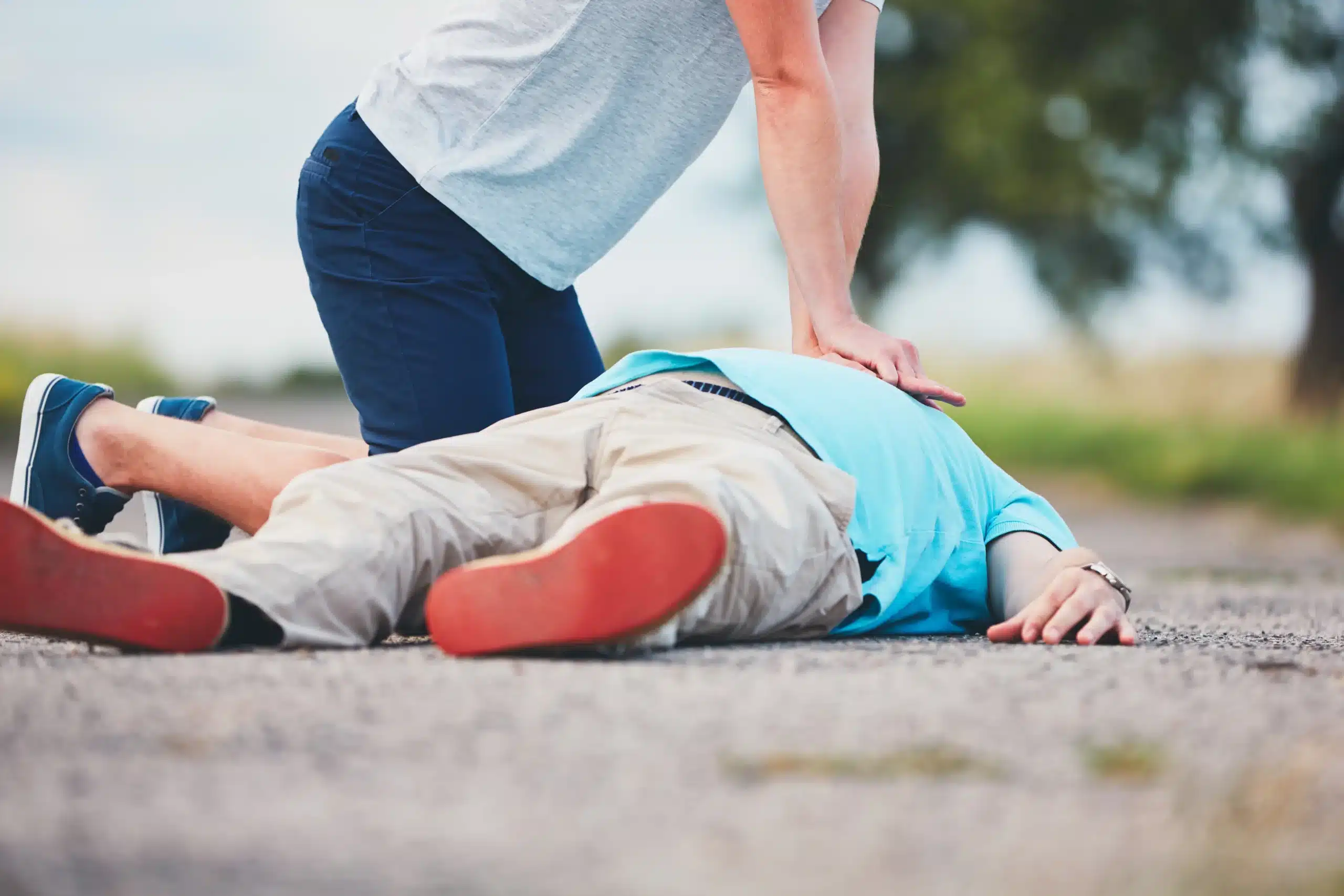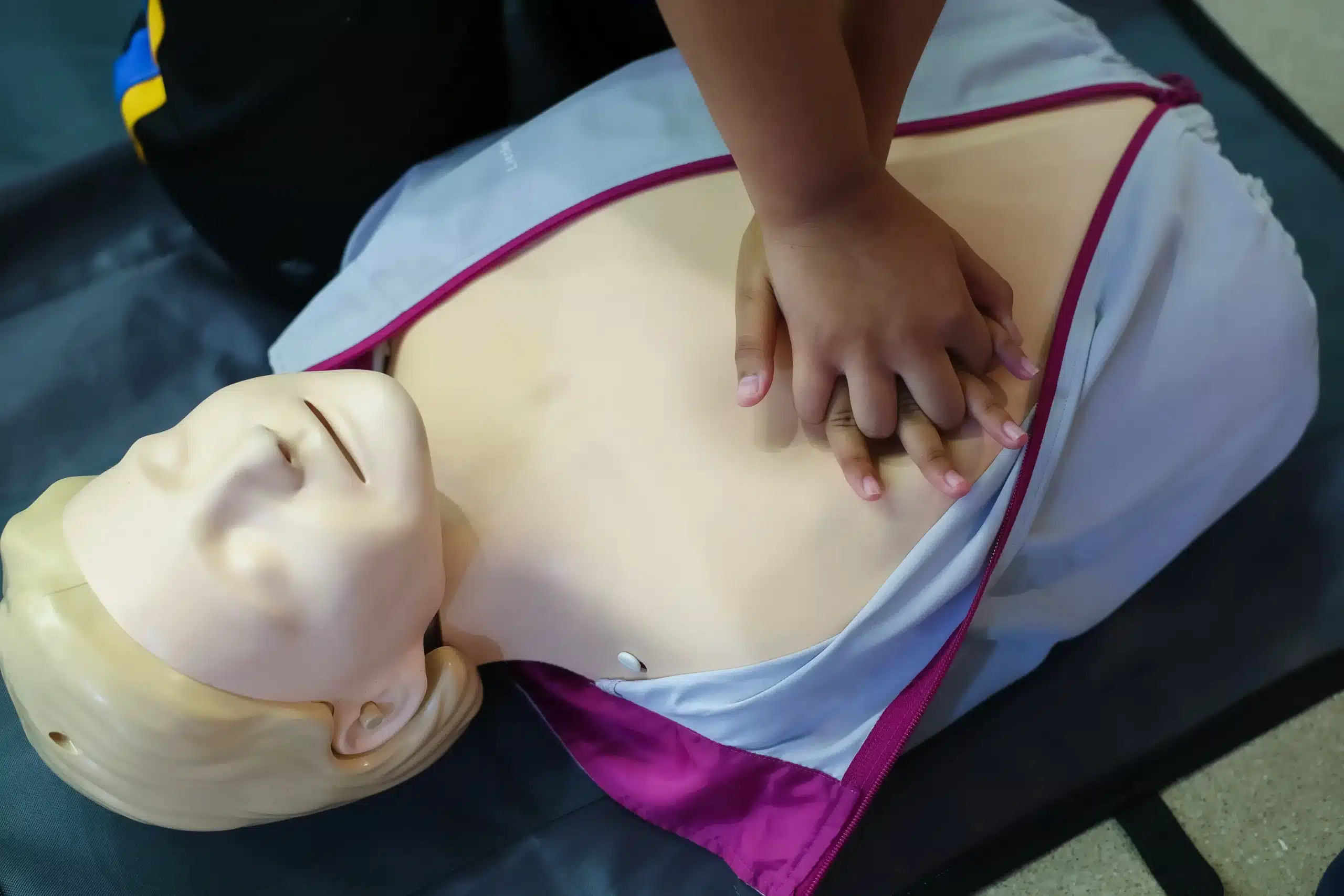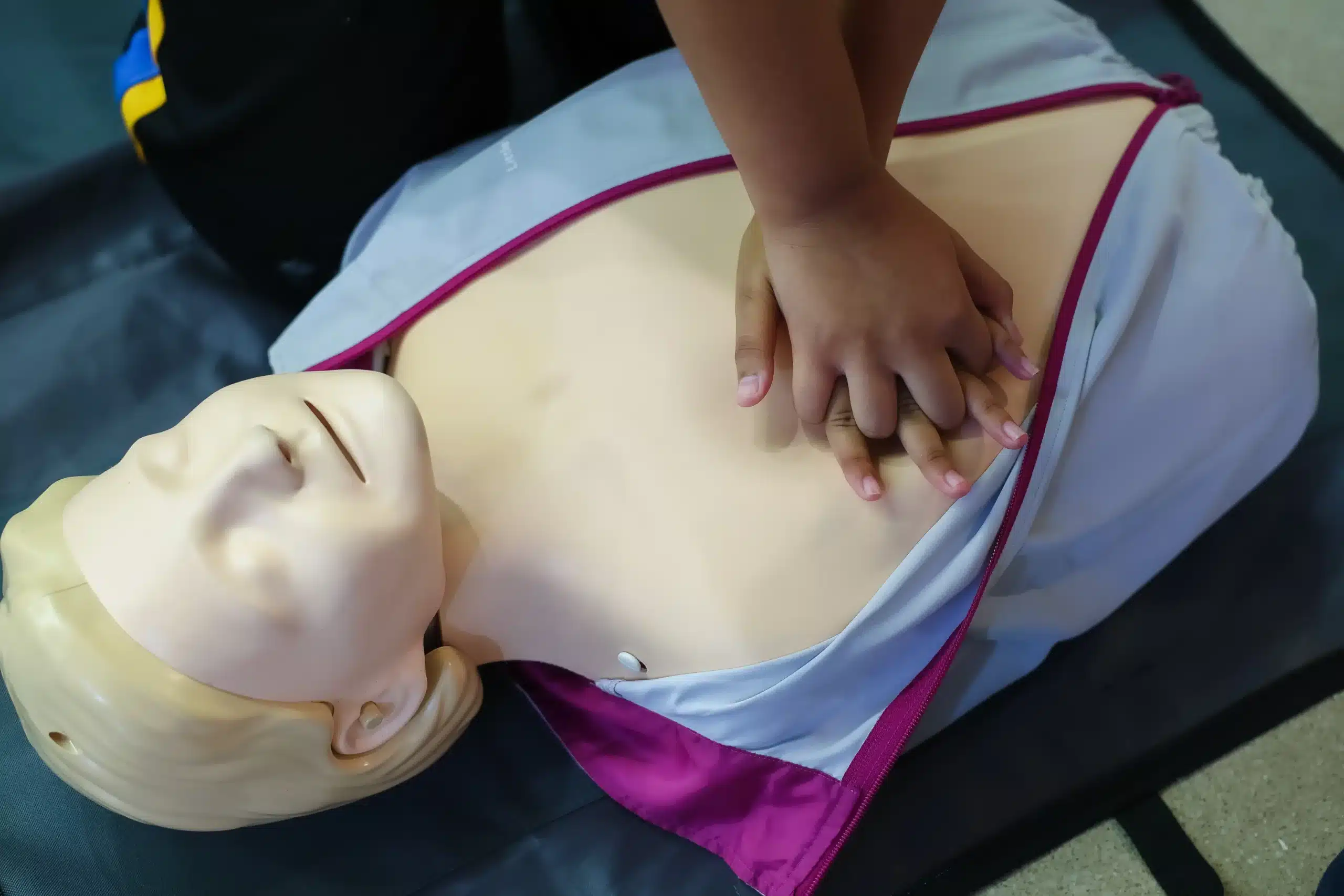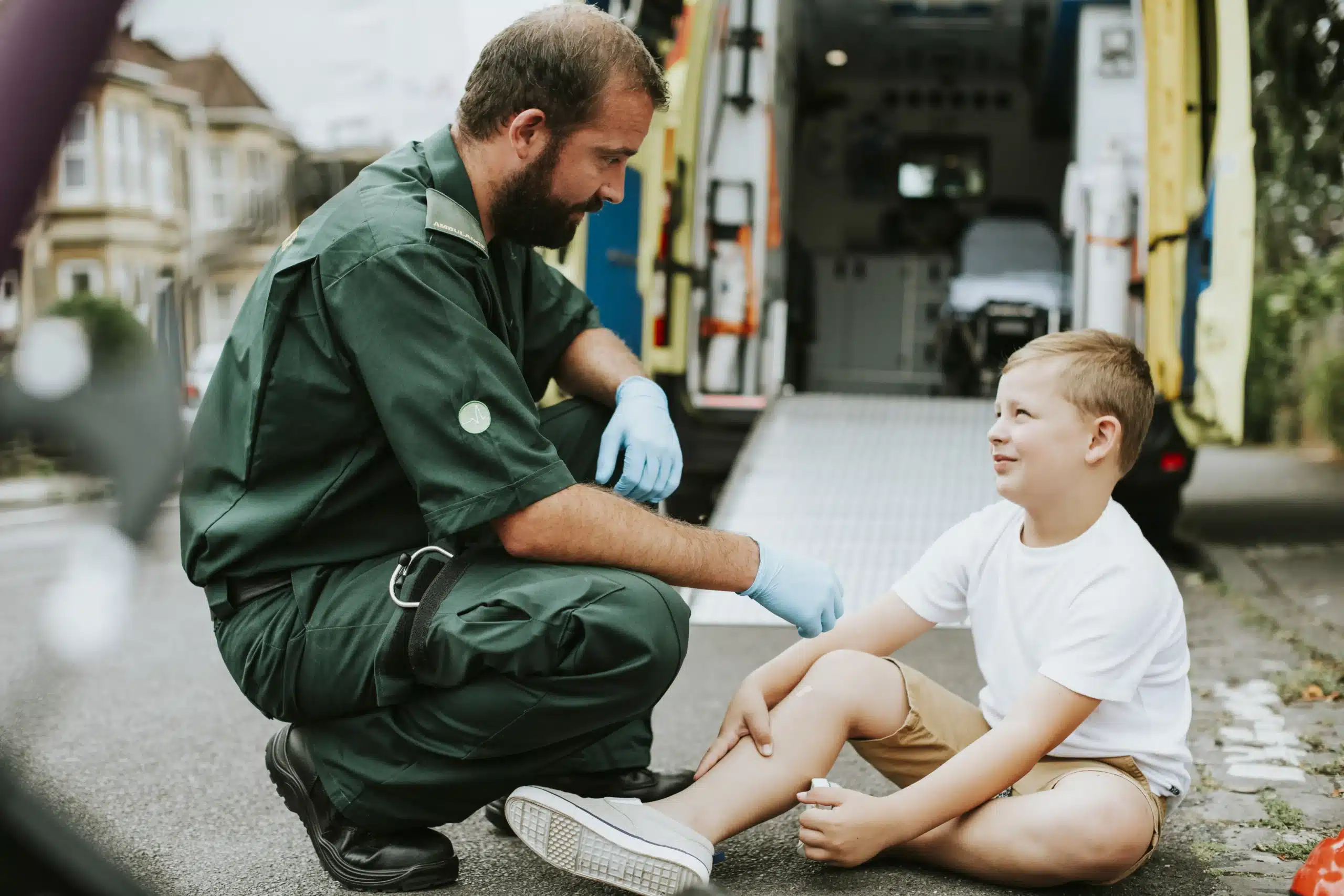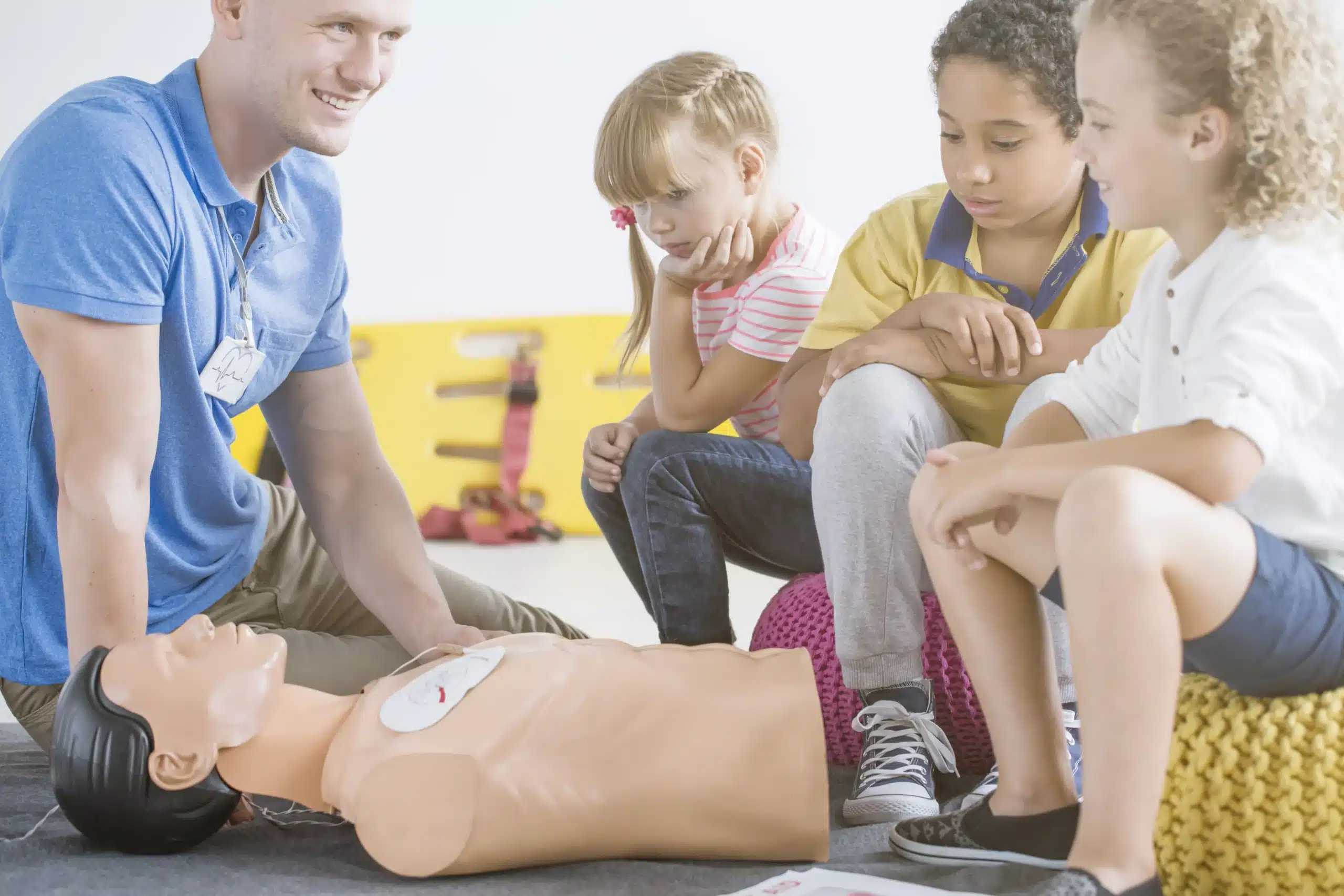Have you ever searched for “cardio pulmonary resuscitation near me”? In moments of crisis, knowing CPR can be the difference between life and death. This guide provides a practical roadmap to understanding and learning CPR, focusing on resources in Petaluma, Rohnert Park, and Novato. We’ll explore the profound impact CPR can have on survival rates, discuss the various types of CPR courses available, and guide you through choosing the right training program. We’ll also delve into the costs associated with CPR training, compare online and in-person learning options, and address common concerns about performing CPR. Empower yourself with the knowledge and skills to respond confidently in emergencies.
Key Takeaways
- CPR can save lives: Learning CPR empowers you to help someone in a cardiac emergency. Find a course near you and become a vital link in the chain of survival.
- Choose the right CPR training: Whether you need basic CPR or a more advanced certification, select a course that fits your needs and consider factors like class size and location.
- Stay current with CPR: Keep your skills sharp with refresher courses and continuing education. CPR guidelines can change, so ongoing learning is essential.
What is CPR and Why Does it Matter?
CPR stands for cardiopulmonary resuscitation. It’s a lifesaving technique used when someone’s heart stops beating suddenly, a condition known as cardiac arrest. CPR helps circulate blood to the brain and other vital organs, buying precious time until professional medical help arrives. This can happen anywhere, from a busy street to your own home, so knowing CPR can make you a vital link in the chain of survival. Learning CPR empowers you to act quickly and confidently in emergencies.
The Impact of CPR
CPR can quite literally double or even triple a person’s chance of surviving cardiac arrest. Think about that—your actions can significantly increase someone’s odds of making it through a life-threatening event. The American Red Cross stresses how crucial CPR training is, especially considering the sheer number of cardiac arrests that occur each year—over half a million. Early intervention with CPR can bridge the gap before paramedics arrive, increasing the likelihood of a positive outcome. Learn CPR and become equipped with the skills and knowledge to make a real difference.
When Do You Need CPR?
CPR is needed when someone is unresponsive and not breathing normally. This usually indicates their heart isn’t beating effectively. It’s important to remember that CPR should not be performed on someone experiencing a seizure. However, if they remain unresponsive after the seizure, then CPR should be started. CPR training teaches you how to assess a situation and determine if CPR is necessary. It also covers essential steps like checking for responsiveness and breathing, calling for emergency medical services (911), and performing chest compressions and rescue breaths. Knowing when and how to perform CPR can be the difference between life and death.
Find CPR Training Near You
Finding the right CPR training can feel overwhelming, but it doesn’t have to be. This section breaks down how to find CPR classes near you and what to look for in a quality provider, focusing on options in Petaluma, Rohnert Park, and Novato, California.
How to Find Local CPR Classes
Start by checking with nationally recognized organizations like the American Red Cross and the American Heart Association. Both offer various CPR and first-aid courses, often with flexible schedules and formats (in-person, online, or blended learning). Search their websites by zip code to find classes near you.
Don’t overlook local resources. Many fire departments and community centers offer CPR training. Check with the Petaluma Fire Department or community centers in Rohnert Park and Novato—a quick online search or phone call can reveal these local options. Also, consider specialized training centers like Safety Training Seminars, which provides CPR certification in Petaluma, Rohnert Park, and Novato.
Choosing a CPR Provider
Not all CPR training is the same. When evaluating providers, prioritize a few key things. First, ensure they offer widely accepted and recognized certification, such as those from the American Heart Association. This is crucial if you need CPR training for your job. Check if the provider is accredited by a reputable organization for added quality assurance.
Read reviews and ask for recommendations. Word-of-mouth can be invaluable in finding a provider known for effective instruction. Consider practical aspects like class size, location, and schedule. Smaller classes often mean more personalized attention. Safety Training Seminars offers group discounts and a low-price guarantee, making it a cost-effective choice.
Choose the Right CPR Course
Knowing which CPR course best suits your needs helps you prepare for a range of emergencies. CPR certification is a valuable skill, whether you need it for your job, want to be prepared for family emergencies, or simply want to feel more confident helping your community. Let’s break down the different types of CPR courses available.
Adult CPR
Adult CPR teaches basic life-saving skills like chest compressions and rescue breaths. It’s designed for anyone who wants to know how to help an adult whose heart has stopped beating. You’ll learn to recognize the signs of cardiac arrest and perform CPR until professional help arrives. This foundational course empowers you to respond effectively in a crisis. Check out our page on American Heart Association BLS for more information.
Child and Infant CPR
CPR isn’t only for adults; children and infants can also require CPR. Training programs often include specific techniques for performing CPR on younger patients. These courses emphasize the differences in approach based on a child’s or infant’s age and size. Learning these specialized techniques prepares you to handle emergencies involving younger family members or children in your care. For more information on pediatric advanced life support, visit our PALS certification page.
AED Training
Automated External Defibrillators (AEDs) are crucial in cardiac emergencies. Training on how to use an AED is often included in CPR courses and can significantly increase the chances of survival during cardiac arrest. You’ll learn how to assess the situation, safely operate the AED, and integrate its use with CPR. This training provides an added layer of preparedness for various emergency scenarios. Our ACLS course provides comprehensive training in advanced cardiac life support, including AED usage.
Combined CPR Courses
Many CPR training programs offer combined courses that cover adult, child, and infant CPR, as well as AED training. These comprehensive courses equip participants with the skills to respond to a variety of emergency situations. A combined course offers a streamlined approach to learning a broader range of life-saving techniques. For group discounts, see our group CPR discounts page. We also offer a low price guarantee, which you can learn more about on our low price guarantee page.
Top Petaluma CPR Training Providers
Finding the right CPR training provider is crucial for a positive and effective learning experience. Here are some of the leading CPR training providers in Petaluma and the surrounding areas, including Rohnert Park and Novato.
Safety Training Seminars
Safety Training Seminars offers a comprehensive range of American Heart Association certification courses right here in Petaluma. They cover everything from BLS for healthcare providers to ACLS, PALS, CPR, and First Aid, ensuring there’s a course for everyone. They also provide RQI training and pride themselves on daily customer support. With a low price guarantee and classes available in over 60 cities, they make high-quality training accessible and affordable. Check out their group discounts for even more savings.
American Red Cross
The American Red Cross is a nationally recognized organization offering a variety of CPR/AED and first aid training options. They provide in-person, online, and blended learning formats to accommodate different learning styles and schedules. You can find their course offerings and register for a class on their website. Their certifications are widely accepted and valid for two years.
American Heart Association
The American Heart Association is another reputable organization setting the standard for CPR training. They offer a range of courses, from basic Heartsaver CPR AED to BLS for healthcare professionals. Their focus on science-backed techniques ensures you learn the most up-to-date and effective life-saving skills. You can explore their various courses and find a certified training center near you on their website.
Local Centers and Hospitals
Many local community centers and hospitals in and around Petaluma, Rohnert Park, and Novato offer CPR training courses. These classes are often tailored to the specific needs of the community and provide a convenient and affordable option for local residents. Check with your local community center or hospital for upcoming CPR training schedules and registration information. Many of these organizations partner with the American Red Cross or American Heart Association to deliver certified courses.
CPR Training Costs
CPR training is an investment in lifesaving skills, and understanding the associated costs can help you budget effectively. Several factors influence the overall price, including the type of course, location, and any group discounts available. Let’s break down the typical costs associated with CPR training.
Course Prices
CPR and First Aid training typically costs between $40 and $60 per person. Basic Life Support (BLS) classes for healthcare providers generally range from $60 to $80. If you’re training a team, group CPR training often offers a discounted rate, usually around $35 to $45 per person. Keep in mind that there might be a minimum total fee for smaller groups. For example, a class of eight trainees might have a minimum fee of $280 to $320. Safety Training Seminars offers a low price guarantee to ensure you’re getting the best value.
Factors Affecting Cost
Beyond the course type, several other factors can affect the cost of your CPR training. The format of the class—in-person, online, or blended learning—plays a significant role. While online-only CPR courses may seem convenient, they don’t always meet requirements for workplace certification. Only in-person and blended learning CPR courses provide certifications that meet OSHA requirements. Consider this when choosing a course format. Location can also influence pricing, as costs can vary between training centers and regions.
Group Discounts and Offers
If you’re training a group, explore group discounts. Many providers, including Safety Training Seminars, offer reduced rates for group bookings. Contact Safety Training Seminars to discuss group discounts and schedule a class for your team. This can be a cost-effective way to ensure everyone in your workplace or organization receives the necessary training.
What Happens in a CPR Class?
CPR classes blend theory and hands-on practice to give you the skills and confidence to handle cardiac emergencies. They cover everything from recognizing the signs of a cardiac arrest to providing immediate care.
Course Structure and Length
CPR courses typically include interactive lectures, demonstrations, and practice sessions. Instructors explain how to recognize cardiac arrest, activate the emergency response system (calling 911), and perform CPR. They also cover choking relief and how to use an AED. The time commitment varies depending on the provider and the type of certification, but most classes take just a few hours. Safety Training Seminars offers a variety of courses to fit your schedule.
Hands-On Practice and Equipment
Hands-on practice is key to any good CPR class. You’ll work with training mannequins to build the muscle memory and coordination needed for effective chest compressions. This practice helps you feel confident and prepared to use the techniques in a real emergency. Instructors are there to guide you and give feedback, making sure you learn the proper techniques.
Certification
When you successfully complete a CPR class, you’ll receive CPR/AED certification, usually valid for two years. This certification shows you know how to perform CPR and use an AED. Some jobs or volunteer positions require it, so it’s always a good idea to check with your employer or organization for their specific requirements. The certification from Safety Training Seminars meets OSHA requirements, ensuring you have the right credentials.
Online vs. In-Person CPR Training
Deciding between online and in-person CPR training is a common question. Both options offer valid certifications, but the best choice depends on your learning style and preferences. Let’s break down the pros and cons of each.
Pros and Cons
Online CPR training offers flexibility. You can learn at your own pace and revisit materials as needed, fitting the training around your schedule. Some studies suggest online learning can be more effective than traditional classes because of this personalized approach. However, not all online CPR courses are created equal. Look for accredited programs from reputable providers to ensure your certification is widely recognized.
In-person training provides hands-on practice with a CPR mannequin, giving you a physical feel for compressions and technique. This direct experience can boost your confidence for real-life emergencies. The downside? In-person classes require more of a time commitment and may be harder to fit into a busy schedule.
Which Learning Style Suits You?
Think about your learning style and overall goals. If you prefer structured learning, hands-on practice, and value direct feedback from an instructor, in-person training might be a better fit. If you thrive in a self-directed environment and appreciate the flexibility to learn anytime, anywhere, online training could be ideal.
Also, consider your career aspirations. If you’re pursuing a career in healthcare or as a first responder, a BLS certification is likely required. BLS training builds upon basic CPR skills, covering more advanced techniques and team-based resuscitation scenarios. For everyday life and basic workplace requirements, standard CPR training is usually sufficient. Studies show that using training mannequins with feedback features can significantly improve CPR proficiency, so consider this when choosing a course. Regardless of your chosen method, the most important thing is to get trained and be prepared to help in an emergency.
Common CPR Training Concerns
It’s normal to have some concerns about CPR training. Many people feel hesitant about performing CPR, but remember that any action is better than no action during a cardiac emergency. Let’s address some common fears and misconceptions:
Overcome Fears and Misconceptions
One of the biggest anxieties surrounding CPR is the fear of doing it wrong. It’s natural to worry about causing harm, but hands-on training provides the knowledge and practice to confidently perform CPR. Another common misconception is that chest compressions alone are enough to revive someone. While compressions are crucial, rescue breaths are also an important part of effective CPR. It’s also important to understand that CPR doesn’t guarantee survival. It significantly increases the chances of a positive outcome until professional medical help arrives, but it’s not a guaranteed solution. Understanding these facts can help alleviate anxiety and encourage decisive action in emergencies. Addressing these fears head-on is the first step to becoming a confident first responder.
Build CPR Confidence
The best way to overcome fear and build confidence is through high-quality, hands-on CPR training. Professional training equips you with the skills and knowledge to respond effectively in a crisis. In a practical setting, you’ll learn the correct depth and placement for chest compressions using a training mannequin. Real-time feedback during practice sessions helps you refine your technique and understand the effectiveness of your actions. This active learning approach builds muscle memory and reinforces the correct procedures, so you can act quickly and confidently when it matters most. Safety Training Seminars offers CPR training in Petaluma, Rohnert Park, and Novato, giving you the skills and confidence to make a difference. We also offer group discounts for businesses and organizations.
Maintain Your CPR Skills and Certification
Knowing CPR is like having a superpower—the ability to save a life. But just like any superpower, your CPR skills need regular practice and upkeep to stay sharp. This section covers how to maintain your CPR skills and certification so you can be ready when it matters most.
Continuing Education
CPR techniques and best practices can change as medical knowledge evolves. Staying current with these advancements is key to providing effective care. Beyond your formal CPR certification, commit to ongoing learning. Resources like CPR Classes Near Me offer valuable insights into the latest developments in emergency response. Regularly reviewing these resources can help you stay informed and prepared. You can also find helpful information and resources on the American Heart Association website.
Updated Training
Refresher courses are essential for maintaining muscle memory and confidence in your CPR abilities. Consider these courses as tune-ups for your lifesaving skills. Studies, like those published on PMC, highlight the effectiveness of post-event debriefings and simulator-based training in improving CPR performance. Look for training programs that incorporate these elements for a more comprehensive learning experience. At Safety Training Seminars, we offer regular refresher courses to help you stay proficient in CPR. Check our website for upcoming CPR classes in Petaluma.
CPR Provider Support
Performing CPR can be emotionally challenging. It’s important to acknowledge that and seek support if needed. CPR Certification Now emphasizes the importance of psychological support for CPR providers. Remember, taking care of your mental well-being is just as important as maintaining your physical skills. Don’t hesitate to reach out to mental health professionals or support groups if you need help processing your experiences.
Related Articles
- Why CPR is Vital in Saving Lives
- Why CPR is Important in Healthcare – Petaluma CPR Classes
- Find CPR Courses Near Me: Your Guide to Lifesaving Training – Petaluma CPR Classes
- CPR Training in Rohnert Park: Your Complete Guide – Petaluma CPR Classes
- Best Online CPR Classes in Rohnert Park – Petaluma CPR Classes
Frequently Asked Questions
How often do I need to renew my CPR certification? CPR certifications are typically valid for two years. It’s a good idea to check with your employer or certifying organization for their specific renewal requirements. Keeping your certification current ensures you’re up-to-date on the latest CPR guidelines and techniques.
What if I’m afraid of doing something wrong during CPR? It’s completely normal to feel apprehensive about performing CPR. That’s why hands-on training is so important. Practice builds confidence and helps you develop the muscle memory needed to respond effectively in a real emergency. Remember, any attempt at CPR is better than none when someone’s life is on the line.
Is online CPR certification enough, or do I need an in-person class? While online CPR training offers flexibility, it may not meet all requirements, especially for workplace certifications or certain healthcare professions. In-person classes provide hands-on practice and direct feedback from an instructor, which can be invaluable for building confidence and mastering proper techniques. Check with your employer or certifying organization to determine which type of training meets their standards.
What’s the difference between CPR and First Aid training? CPR focuses specifically on life-saving techniques for someone whose heart has stopped beating. First Aid covers a broader range of injuries and illnesses, including cuts, burns, fractures, and allergic reactions. Many training providers offer combined CPR and First Aid courses, which can be a convenient way to gain both skill sets.
Where can I find CPR classes near me? Start by checking with nationally recognized organizations like the American Red Cross and the American Heart Association. You can also search online for local training centers, community colleges, or hospitals that offer CPR courses. Safety Training Seminars offers CPR classes in Petaluma, Rohnert Park, and Novato, California.
